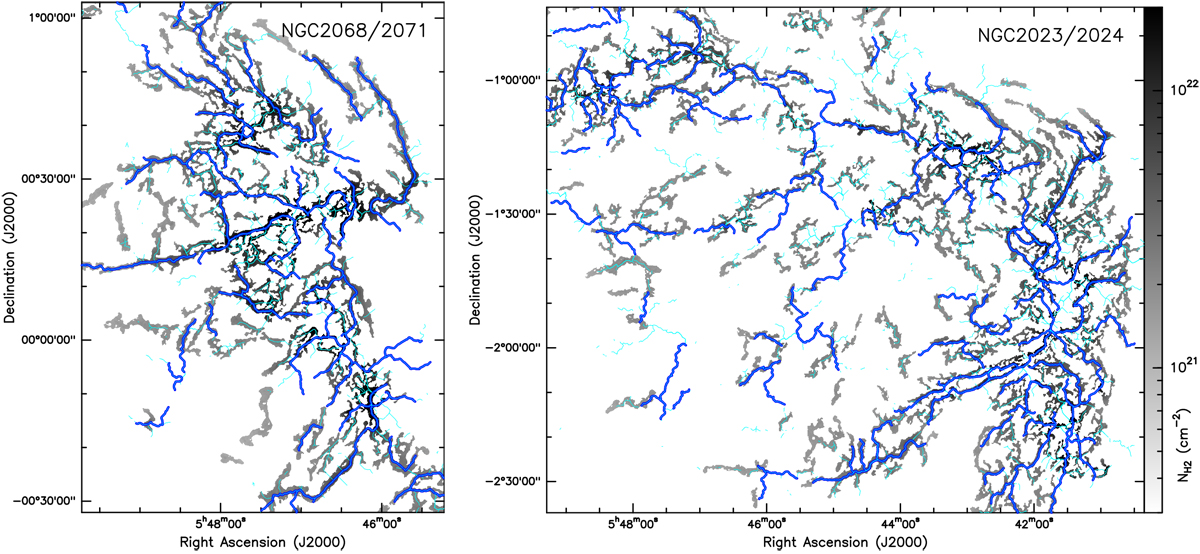Fig. 3

Filament networks identified in the subregions NGC 2068 and 2071 (left), and NGC 2023 and 2024 (right). The gray background image displays the mask of the filamentary network traced with getfilaments (Men’shchikov 2013). The overplotted thick blue skeletons mark the robust filament crests identified with the DisPerSE algorithm (Sousbie 2011, see Sect. 3.2 for details). Together with the additional thin cyan crests, these filament crests make up the entire raw sample of DisPerSE filaments. Within the getfilaments mask, the gray scale is the same in both panels, and reflects column density values in the column density map (Fig. 2 left). Transverse angular scales up to 100′′ are shown, corresponding to ~0.2 pc at d = 400 pc. Figure E.2 (left) shows a similar view for the L1622 cloud.
Current usage metrics show cumulative count of Article Views (full-text article views including HTML views, PDF and ePub downloads, according to the available data) and Abstracts Views on Vision4Press platform.
Data correspond to usage on the plateform after 2015. The current usage metrics is available 48-96 hours after online publication and is updated daily on week days.
Initial download of the metrics may take a while.


